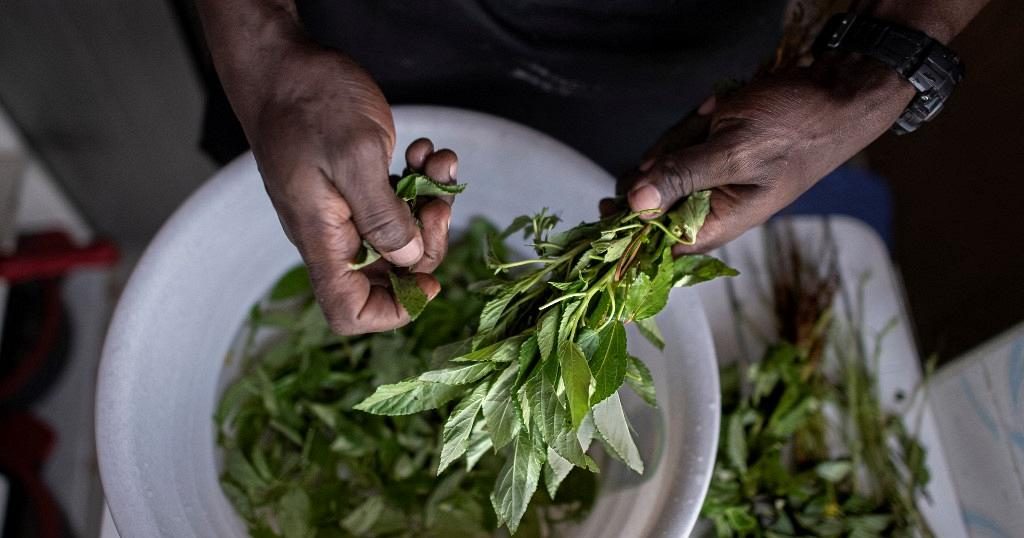By- Aditi Maheshwari
Kenya has been selected for listing in the Register of Good Safeguarding Practices. According to UNESCO, the listing aims to protect the intangible cultural heritage that makes people and their culture stand out in their history, nationalities, languages, ideology, and values.
Kenyan farmers campaign to improve nutritional knowledge because they believe it will help sustain a healthy community, especially important during the pandemic. It has taken fifteen years of collaboration between scientists and communities, including school children, to earn this distinction.
The project dates back to 2007, when researchers became aware of a decline in the food diversity in the country. Two main initiatives were launched; first, the scientists and community groups made an inventory of traditional foods, focusing on traditional vegetables. About 850 indigenous plants with local names were recorded.
The inventory was followed by detailed documentation of use and related indigenous knowledge, including recipes and practices.
It finally resulted in the promotion of the foods. For the second initiative, UNESCO, in partnership with the Department of Culture and the International and National Museums of Kenya, and in consultation with community leaders, initiated a pilot project to identify and inventory traditional foodways in partnership with primary school children to raise awareness about the threat to traditional foodways. Such initiatives made people and relevant institutions take active participation in similar activities.
Researchers attributed all this to a change in lifestyles and their increased dependency on less nutritional and convenient foods.
Researchers also highlighted that colonialists encouraged locals to feel that their traditional food sources were inferior. Jodeh Kinyanjui, a 61-year-old mixed vegetable farmer, reflected on when farming practices differed.
He stated that “we never sprayed traditional vegetables with pesticides in the olden days as they would grow naturally without it. We would only add a little fertiliser. The farmer also added that they depended on rainfall for water and that it was the advantage of traditional vegetables.”
Patrick Maundu, an ethnobotanist at the National Museums of Kenya, is one of the researchers involved in the campaign.
He says, “during colonial times, people grew to view traditional vegetables as inferior to other vegetables such as potato, cabbage, Swiss chard, and kale.”
Research has shown that they have about 220 species of traditional vegetables consumed by 60 or so communities in the country. In earlier times, especially during the colonial period, people were brainwashed into believing that what was theirs was not the best choice and was associated with poverty and backwardness. So gradually, people resorted to other vegetation types and ignored their staple and traditional vegetables.
According to researchers like Maundu, many of the indigenous foods were, in most cases, more nutritious than the exotic foods that were replacing them. For example, native traditional vegetables are ten-fold more nutritious than cabbage, and as such, there is no reason not to promote these traditional foods. Grains from leafy amaranth were a better source of iron and vitamin A than the cabbage by a factor of ten.
Similarly, the baobab had almost ten times as much vitamin C as the orange. Maundu adds that the 1970s and 1980s saw a trend whereby exotic foods were promoted over traditional foods, leading to less variety in food available for consumption.
Over the years, two local groups, the African leafy vegetables program and the Foodways program, worked with UNESCO. Researchers worked on Kenya’s traditional foods, including how it is prepared and people’s eating habits. On being satisfied with the nutritional elements, they took steps to promote traditional vegetables that also help withstand hotter climates.
To increase awareness about such neglected vegetable plantations, a program that involved a partnership between Biodiversity International and National Museums of Kenya published information on different vegetables and their nutritional value.
A bias towards vegetables existed because they can be planted and harvested within one season, unlike fruits that take three to five years to produce a good harvest.
According to Researchers, by 2006, a notable change in attitude towards the consumption of traditional vegetables was visible.
Maundu says: ” When we started, we had few of these traditional foods in the market. Go to any market in Kenya now, and you will see these traditional foods. Especially traditional vegetables. Also, go to many of the restaurants, you see them selling traditional foods, especially the vegetables again, what we call the African nightshade, the amaranth, and other types. Up to 17 species now can be found in the markets.”
In a local market, 68-year-old Francis Nganga is checking out the vegetables. She says: “We used to consume traditional vegetables in the olden days.
However, the colonialists brought kales and cabbages, which led to a decline in the consumption of traditional vegetables. After a while, we noticed that the exotic vegetables harmed our health, and we would have occasional stomach upsets.”
In the capital, Nairobi, a small restaurant specialising in cooking and serving traditional food was opened in 2014 by Miriam Nabakwe, a consultant in the hospitality industry. Being a fitness freak, she likes serving healthy food at affordable prices, less than 6 US dollars. Elisha Andende is a satisfied customer. He says, “I prefer this type of food because it is nutritious; also, its cholesterol content is low compared to other foods from KFC (Kentucky Fried Chicken) and the others.”
Nabakwe says, “COVID-19 has made people naturally conscious about health, and traditional foods greatly impact their understanding of nutritional benefits.
Traditional food restaurants are the future. I have seen it, and it has worked for me. I think this is because people are trying to get away from eating conventional foods like junk food, so they are embracing more to this.”
It is common for communities to flaunt their traditional craftsmen and craftswomen as a manoeuvre to highlight their cultural heritage.
Still, Kenyan traditional foods and foodways were under threat due to historical factors and the pressure of modern lifestyles. Still, UNESCO recognition has brought Kenya’s traditional food and foodways back into the spotlight where it truly belongs.





Comments are closed.